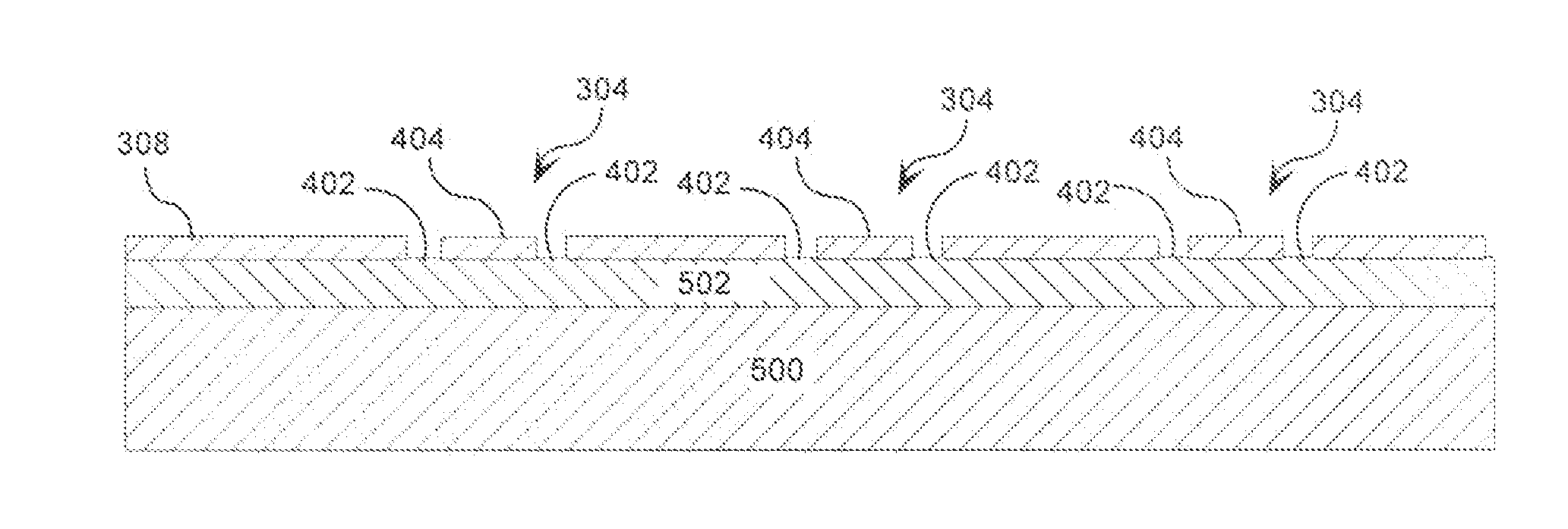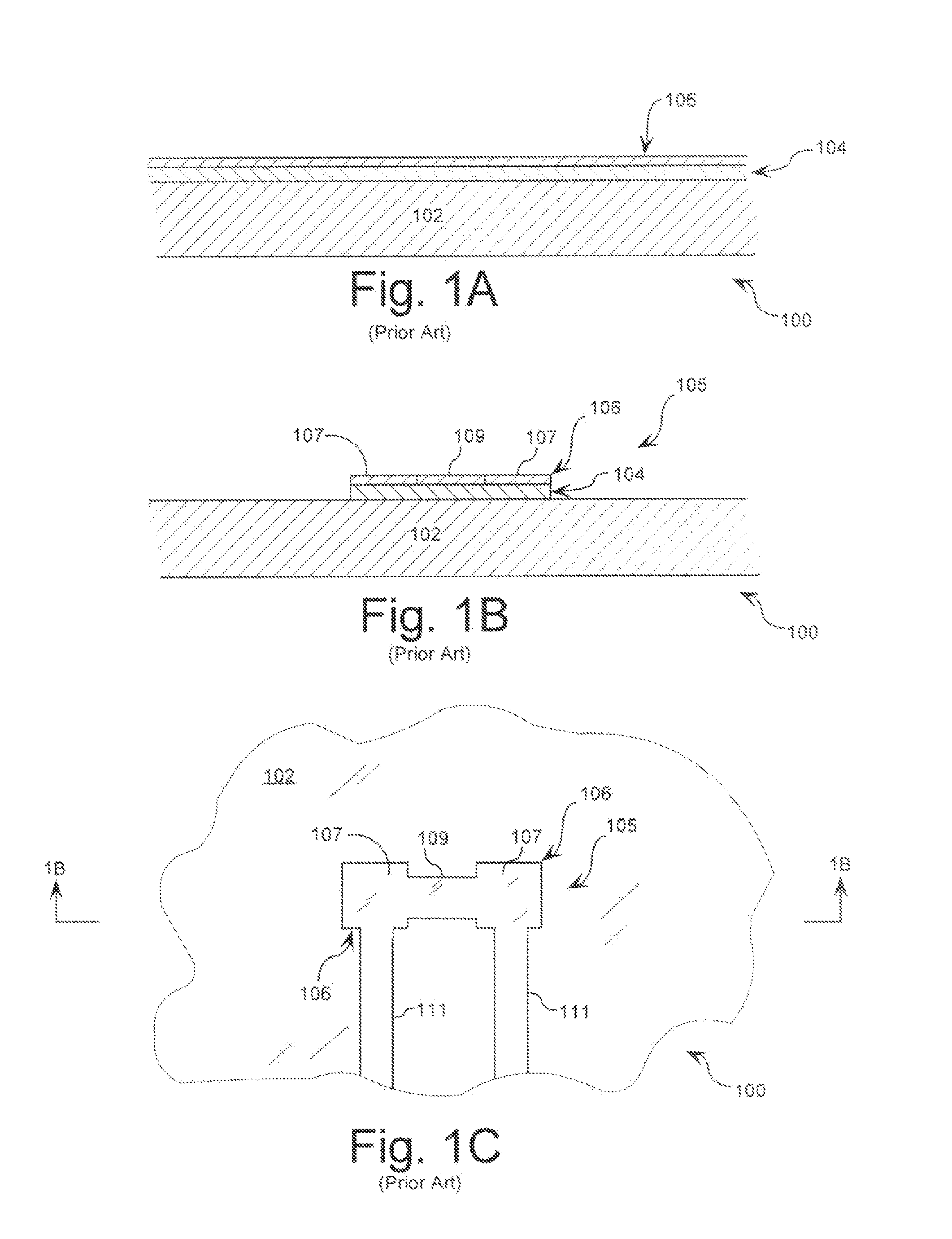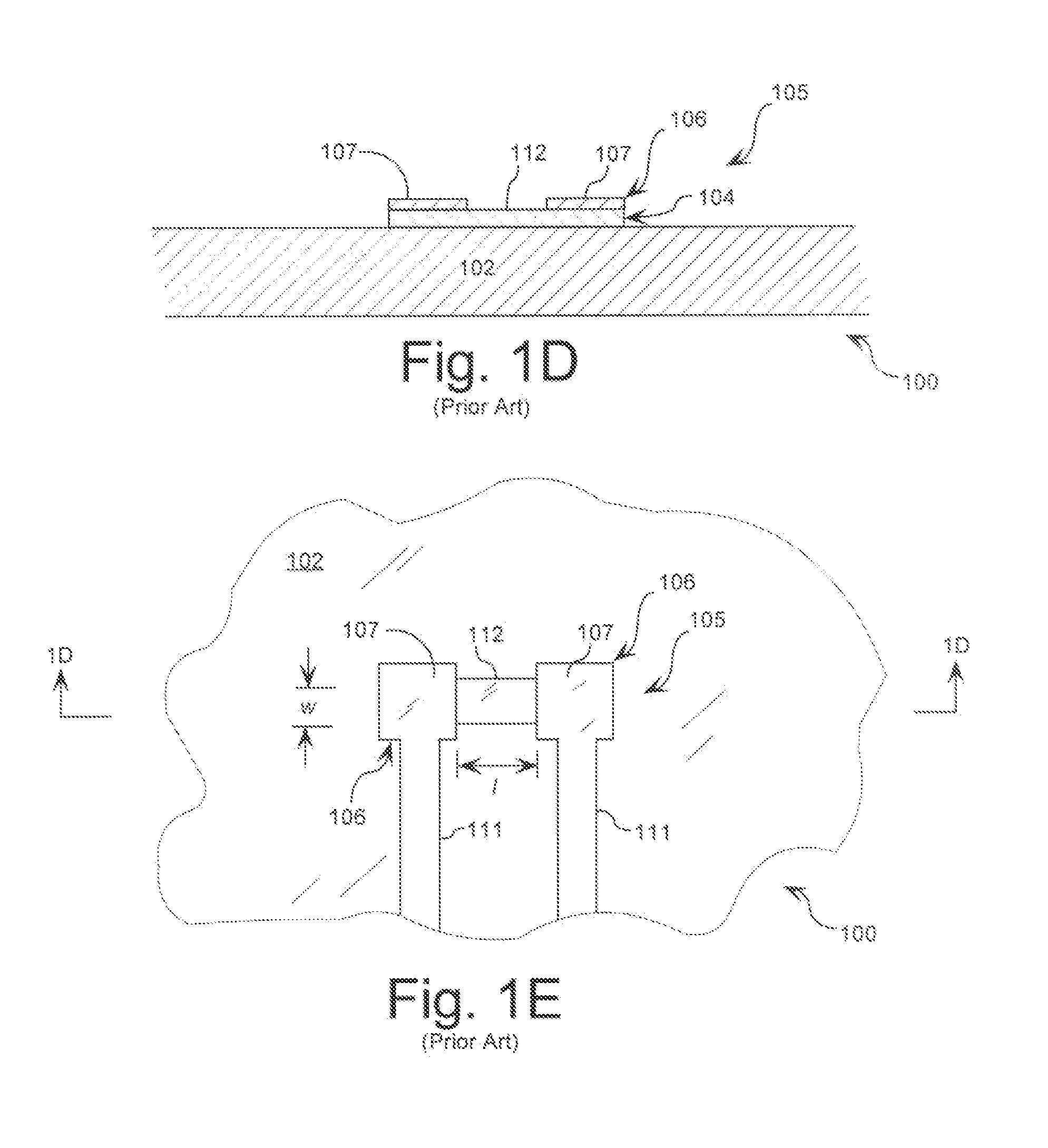Product Optimization Process for Embedded Passives
a passive component and product optimization technology, applied in the field of multi-layer circuit board manufacturing, can solve the problems of limiting the precision of the components that can be formed, the value of embedded passive components that are formed on the board is not uniform, and the design and etching process can also introduce errors, so as to improve the accuracy of analysis
- Summary
- Abstract
- Description
- Claims
- Application Information
AI Technical Summary
Benefits of technology
Problems solved by technology
Method used
Image
Examples
Embodiment Construction
[0027]In order to assist the reader in understanding the inventive arrangements, a conventional process used to form embedded passive components in circuit boards will be described. This conventional process is illustrated in FIG. 1A-1G. The process begins by selecting a circuit board panel (“a board”) 100 as shown in FIG. 1A. The board 100 has a dielectric layer 102, a passive component layer 104, and a conductive metal layer 106. The dielectric layer can be comprised of a woven glass material, a non-woven glass material, or any other dielectric material known in the art. The passive component layer 104 is typically comprised of a passive component material suitable for fabricating resistors (“resistor material”) or for fabricating capacitors (“a capacitor material”). The resistor material can include a metal thin film on a copper foil, a polymer thick film, a ceramic thick film, or the like. The capacitor material can include, but is not limited to, a polyimide, a proprietary diel...
PUM
| Property | Measurement | Unit |
|---|---|---|
| Electrical resistance | aaaaa | aaaaa |
| Electrical conductor | aaaaa | aaaaa |
| Area | aaaaa | aaaaa |
Abstract
Description
Claims
Application Information
 Login to View More
Login to View More - R&D
- Intellectual Property
- Life Sciences
- Materials
- Tech Scout
- Unparalleled Data Quality
- Higher Quality Content
- 60% Fewer Hallucinations
Browse by: Latest US Patents, China's latest patents, Technical Efficacy Thesaurus, Application Domain, Technology Topic, Popular Technical Reports.
© 2025 PatSnap. All rights reserved.Legal|Privacy policy|Modern Slavery Act Transparency Statement|Sitemap|About US| Contact US: help@patsnap.com



